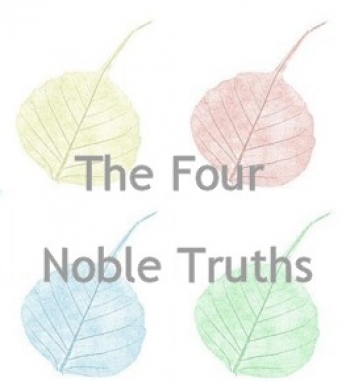The heart of the Buddha’s teaching lies in the Four Noble Truths which he expounded in his very first sermon, “Setting in Motion the Wheel of Dharma”, to the five ascetics at Deer Park. As mentioned in the November issue of “Deer Park”, we went through the awakening process of the Buddha and learnt how he reflected on “this is sorrow, this, the arising of sorrow, this, the cessation of sorrow, this, the path leading to the cessation of sorrow.” He realized the origin of dukkha and the truth of conditionality of Dependent Origination.
The Four Noble Truths are:
1. Dukkha
2. Samudaya, the arising of dukkha
3. Nirodha, the cessation of dukkha
4. Magga, the way leading to the cessation of dukkha.
The First Noble Truth dukkha is generally translated as “The Noble Truth of Suffering”. Because of this, many has misinterpreted Buddhism. They thought that according to Buddhism, life is nothing but pain and suffering and might even regard Buddhism as pessimistic.
Buddhism is neither pessimistic nor optimistic. If anything at all, it is realistic, for it takes a realistic view of life and of the world. All the practices lead to awakening and that is waking up to the reality of life.
The Pali word dukkha , or duhkha in Sanskrit, in ordinary usage means ‘suffering’, ‘pain’, ‘sorrow’ or ‘misery’ as opposed to the word sukha meaning ‘happiness’ ‘comfort’ or ‘ease’. It also carries a deeper philosophical meaning such as ‘imperfection’, ‘unsatisfactoriness’, ‘impermanence’, ‘emptiness’. It is therefore a generalization to translate dukkha as ‘suffering’.
The Buddha talks about the different forms that dukkha takes, both evident and the subtle. He starts with the suffering inherent in the physical process of life itself – birth, aging, sickness and death. Dukkha appears in our reactions to disagreeable situations, such as in anger, sorrow, frustration and fear that arises from painful separations, unpleasant encounters and the failure to get what we want. Even pleasure is not immune from dukkha. While it gives us happiness when it lasts, it is not everlasting and when it is gone, the loss leaves us feeling terrible. Therefore we spend our lives running after pleasure and running away from pain, rarely enjoying the peace of contentment. We also live our days in the past and the future and seldom in the present moment. Then in the end we die, leaving behind the life we worked so hard to build, things we accumulated and everyone we love.
But even death does not bring us to the end of dukkha, for the life process does not stop with death. When life ends in one place, with one body, the ‘mental continuum’, the individual stream of consciousness, springs up elsewhere with a new body as its physical support. Thus the cycle goes on over and over again – birth, aging and death, driven by ignorance and the thirst for existence. The Buddha calls this round of rebirths samsara “the wandering,” and it has been going around through beginningless time. The Buddha also describes the various realms where rebirth can take place – realms of torment, the animal realm, the human realm and realms of celestial bliss. Life at any plane can come to an end. It is impermanent and is also dukkha. For this reason, one aspiring to the end of dukkha must attain emancipation from the cycle of birth of death.















